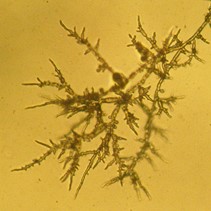
Version 11/5/2019
Application: Initial testing of individual plants suspected to have Phytophthora root rot or Phytophthora foliar blights. Because of cross-reactivity with Pythium and Phytopythium species, a positive test result is not definitive for the presence of Phytophthora.
Advantages: Provides results very quickly.
Limitations: Not suited to testing large numbers of plants. Very small sample size can easily result in false negative unless infection level is high. Proper root selection is critical; selected roots must have enough antigen (specific Phytophthora-associated biochemicals) to produce a reaction. Otherwise, a false negative result can be obtained from infected roots or leaves. Plants should be unpotted to select roots. Test does not identify Phytophthora species present. False positives can result because the test cross-reacts with many Pythium and Phytopythium species. Many Pythium and Phytopythium species are plant pathogens, especially of seedlings, but others are saprophytes that decay organic matter. A positive result requires further testing to determine if Phytopythium is present.
Methods: Choose roots that appear discolored, soft or decayed. In roots decayed by Phytophthora species, the outer rotted tissue layers (epidermis and cortex) may slip off easily, leaving only the thin core of vascular tissues behind. Roots from the bottom or interior of the root mass may be the more likely to show symptoms. Place selected roots in the extraction bag and follow the manufacturer’s directions for running the test. This test can also be used on leaf tissues to test for the presence of foliar-infecting species such as P. ramorum. Some root-rotting Phytophthora species can also cause leaf spots in nursery conditions.
Only a small amount of root or leaf tissue (0.15 g) can be used in the Agdia test. This is equivalent to about 8 inches (20 cm) total length of fine (0.5-1 mm diameter) roots. When inserting the test strip into the buffer, it is important that the liquid wicks up only through the bottom of the strip. Strips have a line indicating how far the strip should be inserted into the liquid. At least one colored line, the control line at the upper part of the strip, should show up for each test. If this control line does not appear, the test is invalid. The line indicating a positive reaction is below the control line.